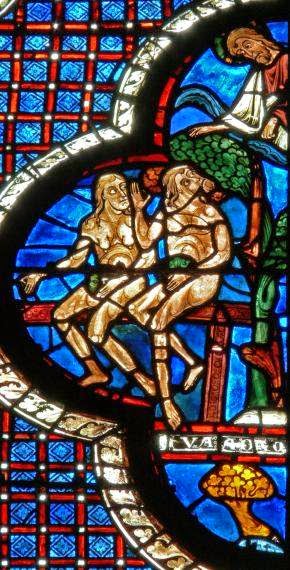A few months ago, Dr. Christine Joynes (Trinity College, University of Oxford), the Co-Director of Oxford's Centre for Reception History, extended an invitation to me to come to Oxford to give a lecture. The ongoing series of lectures is called The Hussey Seminar, and it is described as "The Bible in Art, Music, and Literature Seminar."
I gave the lecture on June 16, 2014, in the Danson Room at Trinity College. Here is a picture of Dr. Joynes and me during the questions and discussion after the lecture:
 |
| Dr. Christine Joynes moderated the questions/discussion after the lecture |
I wish to thank Dr. Joynes for her invitation. The lively discussion after the lecture was extremely enjoyable. Some details about the lecture and discussion:
I titled the lecture, "Killing the Fatted Calf: Some Variations in the Reception of the Prodigal Son."
Of the hundreds of examples of the "afterlives" of this parable, I chose just five examples to discuss in the 50-minute lecture (I will discuss these examples in detail in later posts on this blog):
1. The depiction of the Prodigal Son parables in the stained-glass window of Chartres Cathedral. I chose this example for two reasons: It details the younger son's behavior while away from home (its seven scenes of the son's debauchery equal the seven scenes of rejoicing at his return--out of a total of 30 scenes), and it gives a definitive answer to the question that is left ambiguous in the parable itself: Does the older brother join the celebration?
2. The Prodigal Son play of Antonia Pulci (ca. 1500). Pulci’s play is notable for incorporating the
seven deadly sins into the narrative, extending the theme of gambling, reconciling
the two brothers, and explicitly applying the message to all humanity.
3. Dürer’s The Prodigal Son amongst the Pigs (1496) was included because of the impact this
powerful image had on later representations of the prodigal and because of the
possibility that Dürer himself identified with the prodigal.
4. Robert Wilkins's blues song, "The Prodigal Son," is important, because
it illustrates three major things: (1) how people identify with the prodigal,
(2) how the parable is used as a universal call for repentance, and, (3) most
importantly, how the “prodigal Son pattern”—the redemption that comes after
returning home from leading a life of sin—provides a well-traveled bridge
between the sacred and profane in African-American music during this era.
5. Thomas Hart Benton’s lithograph of the prodigal
son is perhaps my favorite image of the parable. It has a haunting power, and its interpretation is especially intriguing, including the possibility that, like Dürer’s image, there are autobiographical elements included. Dominant, though, are the social, political, economic, and human implications--and its connections to the Great Depression and Dust Bowl.
I closed the lecture with some words about the importance of the centuries of conversations about the interpretations of the parables and the importance of our responses to the parables--what Mikhail Bakhtin calls "Answerability"--the ethical and other demands they seek to make upon their interpreters.
The discussion after the lecture was lively. Dr. Joynes began it by asking about what differences it might have made in the Prodigal Son play genre that the play I discussed was written by a woman. Jonathan Downing asked whether Wilkins's blues album containing "The Prodigal Son" was an act of trying to reclaim it from The Rolling Stones, who had recorded a truncated version of the song in 1968 on the same album that contained "Sympathy for the Devil." Another questioned whether the image in Dürer’s The Prodigal Son actually looked like Dürer’s image in self-portraits (part of the answer is that in at least one of his self-portraits, Dürer modeled himself after the image of Jesus, which is quite different from a portrayal where you model yourself after the prodigal son). Another person asked about the ambiguity of parables, and we were able to discuss how the fact that parables resist monologic interpretations actually serves to encourage interpreters to have greater depths of engagement with them instead of less engagement.
Other questions were also very interesting, and I will address those in future posts as I discuss the interpretations above in detail, but one thing was universally agreed upon: People in the audience preferred interpretations that maintained the ambiguities of the parable. That is, the two visual images that portray just one point in the parable--Dürer’s and Benton's--were valued more highly than those that depicted numerous scenes in the parable and offered specific interpretations of questions unanswered by the parable--such as the stained-glass window, Pulci's play, and Wilkins's blues song, all of which declare that the elder brother joins the celebration. Those images of just one scene left many of those questions still unanswered, and they raised other questions as well.
In other words, people preferred interpretations that maintain the dialogic nature of parables to those that try to impose some sort of monologic discourse.
That's an insight that deserves further discussions in future posts.

























